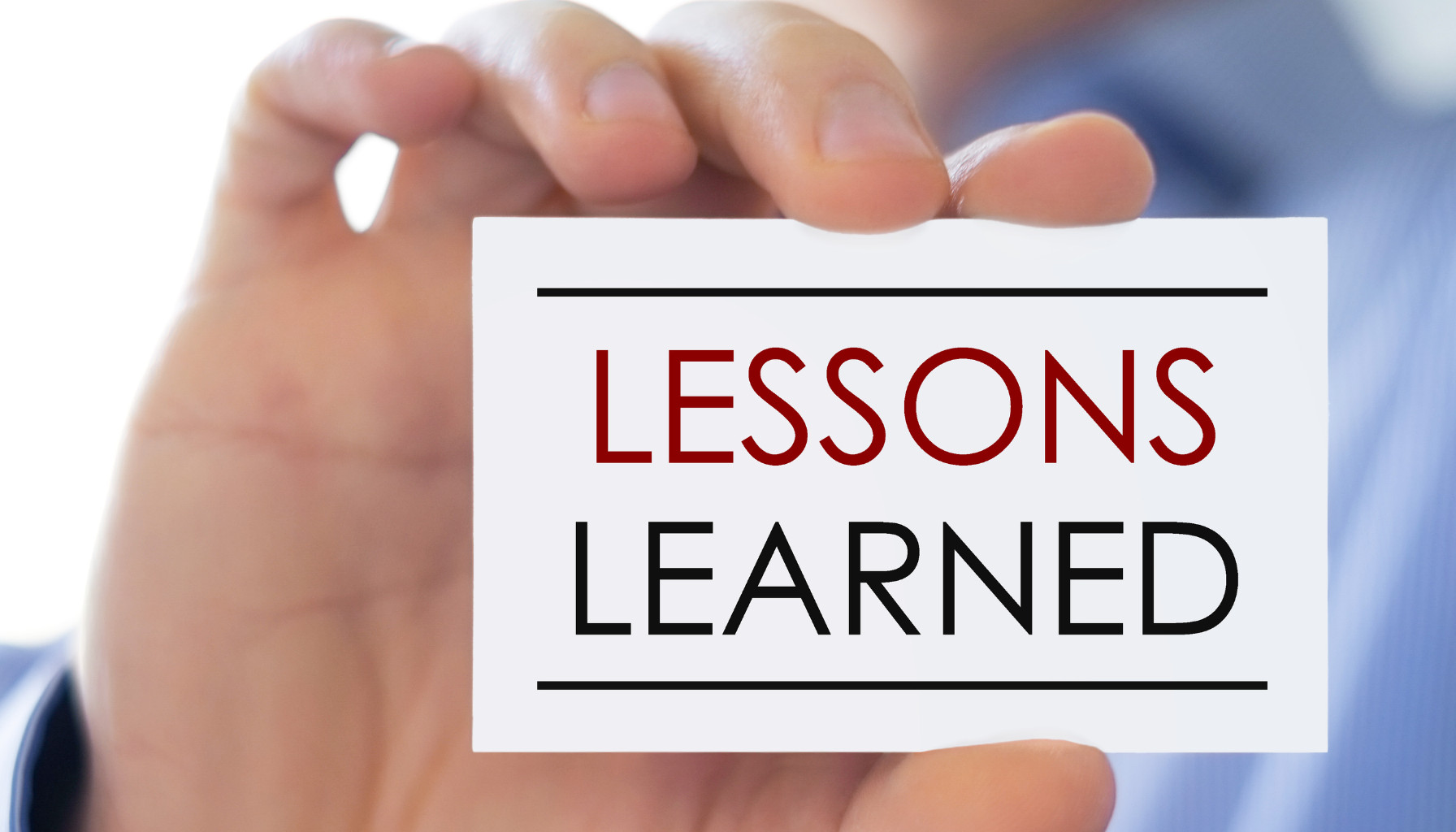This article will explain how to update lessons learned register entries effectively, the difference between the lesson learned register and the lessons learned repository, and why an agile registry mindset can help in modern project environments. By the end, you’ll be able to integrate best practices into your exam preparation and apply them in your professional projects.
Understanding Lessons Learned: Foundational Overview
In project management, “lessons learned” refer to the knowledge gained during the course of a project, phase, or even a specific iteration in Agile frameworks. They represent practical insights—both positive and negative—derived from real events or outcomes.
Although many see lessons learned as a final step in project closure, effective project managers know that capturing and reviewing them is an ongoing process. By collecting feedback as soon as new challenges or breakthroughs arise, you create a more proactive environment for immediate improvements.
The Lessons Learned Register Explained
The lessons learned register is a living document that starts at the very beginning of a project and gets updated continuously. Each time a new insight surfaces—such as a more efficient communication channel or a pitfall that caused schedule delays—project teams update lessons learned register entries to record these experiences.
If you’re studying for the PMP or CAPM, you’ll often see references to specific processes that govern the creation and use of this register. Think of it as a day-to-day log of practical tips and issues encountered. In some cases, you might hear it referred to as a lesson learned register in exam scenarios—singular or plural, the function remains the same.
What processes update the lessons learned register? In the PMBOK® Guide, multiple areas can involve updating this register. The main focus is typically within Executing and Monitoring and Controlling processes, although you’re encouraged to add relevant information as soon as it arises:
- Managing Project Knowledge: Documenting lessons learned is a crucial part of knowledge management throughout the project life cycle.
- Control processes: For instance, Control Scope, Control Schedule, and Control Costs can all yield lessons learned about what worked and what didn’t in managing the triple constraints.
- Close Project or Phase: A final pass ensures you’ve captured and reconciled all the lessons from that phase or the entire project.
By consistently leveraging these processes, you ensure the team’s knowledge remains fresh and easily accessible for mid-project improvements and future endeavors.
Lessons Learned Repository: The Organizational Knowledge Base
Once a project—or a specific phase in a multi-phase initiative—reaches its conclusion, the learnings documented in the lessons learned register are transferred to the lessons learned repository. This repository is often a broader organizational process asset (OPA), serving as a central library for all lessons gleaned across multiple projects.
The difference is straightforward:
- Lessons Learned Register: Project-level documentation, updated throughout the project or phase, used primarily by the immediate team to make timely adjustments.
- Lessons Learned Repository: An organizational repository, updated at project or phase closure, accessible to future teams and stakeholders.
Properly updating the repository not only benefits your immediate environment but also contributes to the collective intelligence of your organization. Future projects can tap into past experiences, drastically reducing the risk of repeated mistakes.
Why Are These Distinctions Important for the PMP and CAPM Exams?
Both the PMP and CAPM tests measure how well you understand the practical application of project management best practices. Understanding the difference between a lessons learned register and a lessons learned repository is often tested in scenario-based questions.
For example, a question might describe a project scenario where the project is nearing closure. You could be asked: “Where do you store the final compilation of lessons learned?” If you recognize that the project is ending, you’ll know to select “the lessons learned repository” over the “register.” Another example might revolve around mid-project updates, prompting you to choose the register as the correct answer.
Understanding what processes update the lessons learned register also ensures you’re equipped to handle real-life project nuances. Whether you’re dealing with scope creep, budget shortfalls, or resource constraints, you’ll know exactly when—and how—to record critical insights.
When and How to Update Lessons Learned Register Mid-Project
Updating the lessons learned register goes beyond ticking a box. It’s about engaging the team in continuous improvement. Here are some best practices:
- Regular Check-Ins: Schedule short sessions—perhaps at the end of each iteration in an agile registry context—where team members can share new insights. Record each lesson immediately to preserve details and context.
- Focus on Practicality: Rather than filling the register with abstract thoughts, capture concrete solutions or obstacles. Clear descriptions make it easier for future users to understand the issue and replicate or avoid it.
- Open Communication Channels: Encourage the entire team, not just the project manager, to update lessons. This inclusivity often unearths critical details that might otherwise remain hidden.
- Analyze Trends: After a few updates, look for common threads. Is there a recurring resource shortage? Communication gap? Identifying trends early can help you resolve issues mid-project, improving the outcome for all stakeholders.
Remember, the update lessons learned register process is vital for agile and traditional (waterfall) methodologies alike. Even if your organization uses an agile registry, the principle of continuous improvement applies universally—empowering your team to pivot and refine its processes.
Transition to the Lessons Learned Repository
At the final stage of a project or phase, the project manager will collect all the data from the lesson learned register and prepare to transfer it into the lessons learned repository. This step typically occurs during “Close Project or Phase” in the PMBOK® Guide process group.
Why is this transfer so crucial? Because once the project is over, the immediate team might disperse to new projects or roles. Without a formal handover, valuable knowledge could vanish. The repository ensures your organization retains that collective experience:
- Future Reference: Subsequent project managers can consult this repository when they face similar challenges, significantly shortening learning curves.
- Organizational Growth: Over time, the lessons learned repository evolves into a deep knowledge base, reflecting patterns and best practices specific to your company or sector.
- Standardization: Some organizations develop standard response protocols based on recurring lessons. For instance, if multiple project teams highlight a budgeting shortfall during initiation, the PMO could standardize guidelines for cost estimation.
The Agile Registry Perspective
In Agile environments, teams often employ sprint retrospectives or regular “inspect and adapt” activities. The concept of an agile registry sometimes emerges—essentially functioning as an ongoing log of incremental insights, akin to the standard lessons learned register but aligned with Agile’s iterative pace.
While the terminologies differ (“retrospectives” vs. “lessons learned”), the objective remains the same: continuous improvement. Agile teams typically document improvements and action items to be tackled in the next sprint. Over successive sprints, these logs build up a trove of knowledge—paralleling what a lesson learned register accomplishes in a waterfall or hybrid context.
This synergy between traditional PMBOK-based processes and Agile retrospectives emphasizes that knowledge management isn’t confined to any single methodology. Whether you’re working with scrum boards or Gantt charts, capturing lessons promptly gives your project—and your team—a competitive edge.
Tips for Integrating Lessons Learned into PMP and CAPM Exam Prep
Many exam candidates struggle with large volumes of information to memorize, from ITTOs (Inputs, Tools, Techniques, and Outputs) to process groups and knowledge areas. Below are strategies to help you incorporate “lessons learned” study effectively:
- Create Your Own Register: As you study, maintain a personal lessons learned register for exam prep. If you realize a mnemonic for remembering formulas doesn’t work, note it down. If a new approach helps you solve network diagram problems faster, record that too.
- Use Real Project Examples: If you’re already involved in projects, try applying your learning to your day-to-day tasks. This practical experience solidifies your understanding of the PMBOK® Guide and makes exam questions more intuitive.
- Embrace Peer Collaboration: Join study groups or online forums (like an “agile registry” environment for exam takers). Share your experiences—both successes and mistakes—and gather fresh perspectives from peers.
- Regularly Review Key Formulas and Concepts: Just as you update lessons learned register regularly, revisit your exam notes and practice tests frequently. Iterative study yields deeper retention.
Common Pitfalls to Avoid
When it comes to lessons learned—both in real projects and exam prep—some pitfalls can derail your progress:
- Waiting Until the End: Many teams wait until project closure to discuss lessons. This delays much-needed mid-course corrections and may cause knowledge gaps if a team member exits early.
- Lack of Ownership: Assign someone (often the project manager) to oversee updates. If no one champions the process, lessons might not make their way to the register or repository.
- Vague Entries: Non-specific statements like “The team faced communication issues” offer little actionable data. Provide context, root causes, and suggested solutions for each lesson.
- Underestimating the Repository: Even if you diligently maintain a lesson learned register, failing to upload these insights to the lessons learned repository at phase or project closure means valuable information could be lost to the organization.
Real-World Relevance Beyond Exams
Once you earn your PMP or CAPM—and become a PMP registered professional—your career will involve real projects with tangible stakes. The habits you develop now while studying for your exams can directly influence the efficiency and success of your future work.
By consistently incorporating a lessons learned register into your projects, you demonstrate:
- Proactive Risk Management: Documenting potential pitfalls early can help you mitigate them before they balloon into major obstacles.
- Stakeholder Engagement: Encouraging open communication about lessons fosters trust and transparency among sponsors and team members.
- Continuous Improvement Culture: Organizations that value lessons learned see better outcomes, higher morale, and more innovative thinking across teams.
Over time, your personal brand as a project manager grows around adaptability and forward-thinking, qualities that can accelerate your leadership path.
Final Thoughts: Tying It All Together
If you’ve ever wondered what processes update the lessons learned register or how an agile registry fits into a more traditional environment, remember that these concepts share a core principle: continuous learning. Whether you’re immersed in a software development sprint or managing a complex construction project, capturing and applying insights in real time remains a key factor in project success.
As you prepare for your PMP or CAPM exam, keep the following in mind:
- The lessons learned register is the project-specific, ongoing document for mid-course improvements.
- The lessons learned repository is the organization-wide library updated at closure—ensuring knowledge persists long after the project ends.
- The best project managers treat lessons learned as an active process rather than a one-time event, whether they use an agile registry or more traditional tracking methods.
Approach your study with the same spirit of continuous improvement. Jot down your personal challenges and breakthroughs, analyze them, and refine your methods. By integrating these habits now, you’ll be better equipped not just to pass your exam, but to excel in real-world project situations where every lesson counts.
Embrace this mindset, and your efforts to update lessons learned register items will pay dividends—both in your certification journey and throughout your career as a PMP registered or CAPM credential holder.




